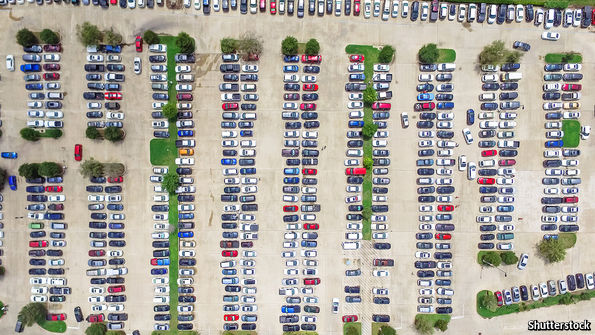...if you know you can park free wherever you go, why not drive? The ever-growing supply of free parking in America is one reason why investments in public transport have coaxed so few people out of cars, says David King of Arizona State University. In 1990, 73% of Americans got to work by driving alone, according to the census. In 2014, after a ballyhooed urban revival and many expensive tram and rapid-bus projects, 76% drove.
This kind of inefficiency exacts a huge toll on a city:
Free parking is not, of course, really free. The costs of building the car parks, as well as cleaning, lighting, repairing and securing them, are passed on to the people who use the buildings to which they are attached. Restaurant meals and cinema tickets are more pricey; flats are more expensive; office workers are presumably paid less. Everybody pays, whether or not they drive. And that has an unfortunate distributional effect, because young people drive a little less than the middle-aged and the poor drive less than the rich. In America, 17% of blacks and 12% of Hispanics who lived in big cities usually took public transport to work in 2013, whereas 7% of whites did. Free parking represents a subsidy for older people that is paid disproportionately by the young and a subsidy for the wealthy that is paid by the poor.
Buffalo, by the way, has realized this, and eliminated parking minimums.

No comments:
Post a Comment